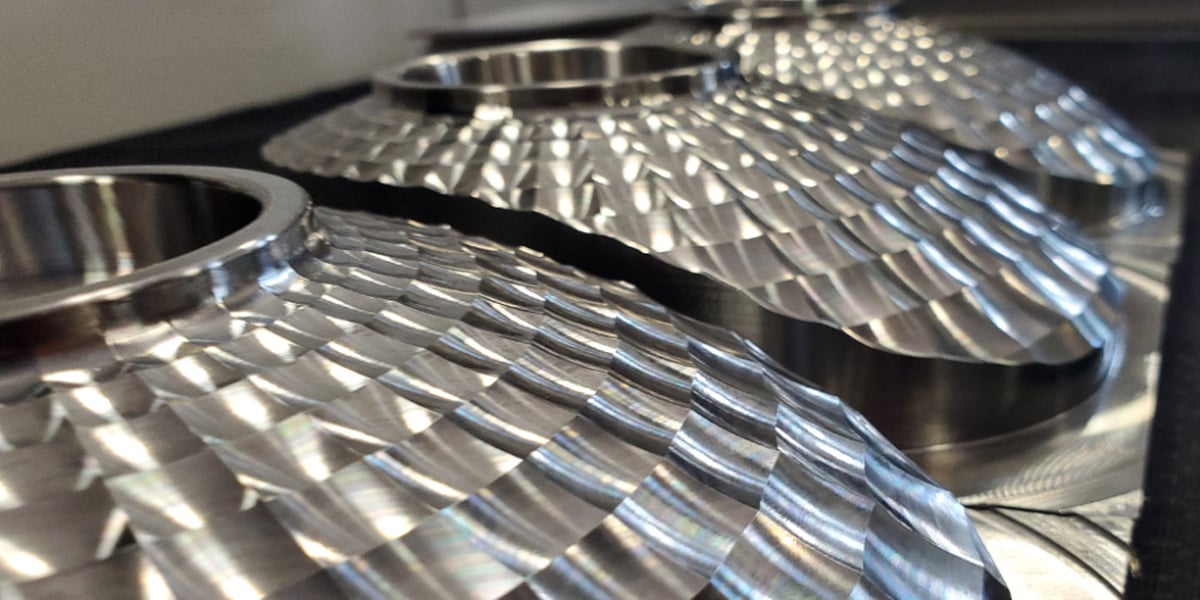Attaining a top-notch, glossy surface through machining requires precise coordination of various elements. The part setup, tool choice, and cutting parameter adjustments all play a role in determining the machining outcome. The motion of the CNC machine tool holds significant importance, with sudden changes in feed rate and irregular movement typically having a negative impact on material cutting and the resulting finish.
Employing Okuma machine tools equipped with THINC-OSP CNC control and Super-NURBS programming features proves beneficial for machining parts with precise measurements and smooth surface finishes.

"Gosiger’s Engineered Systems Division recently ran a test on an Okuma Genos M460V-5AX machine tool. The result was a smoother machine motion, increased part quality, and a 42% reduction in cycle time."

The tested tool path.
The comparison involved two toolpaths for identical parts. The initial one had a tolerance of .02mm with no smoothing, leading to a cycle time of 8:10. In contrast, the second toolpath had a .01mm tolerance and a .25mm smoothing value, completing the cycle in 4:42. Consider the significant time savings if the entire part were machined using these tools.

Toolpath tolerance: .02MM. Smoothing setting: None.

Toolpath tolerance: .001MM. Smoothing setting: Evenly spaced points with maximum spacing (.25mm).
With Super-NURBS on Okuma machines, communication is faster, eliminating the need for a look-ahead. It calculates coordinate points for smoother machine motion, and adjusting toolpath tolerance can save time. Combining Okuma and Fusion 360 allows for accurate, high-quality surface finishes.
Explore the Autodesk blog post by Dan VanDeWoestyne titled "Achieving Exceptional Machined Surface Finishes with Fusion 360 and Okuma Super-NURBS" to delve into the details of the conducted test and our discoveries.